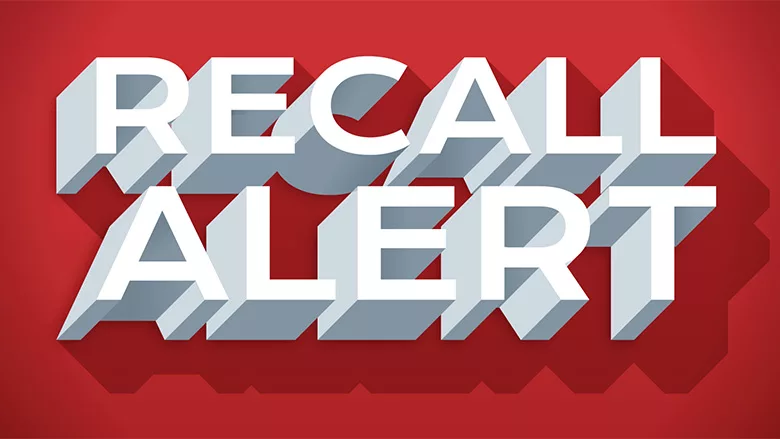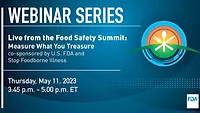Modernizing Recalls is a Must for Consumer Safety

Credit: Filo/DigitalVision Vectors via Getty Images
In recent months, new parents had their worlds shaken by the tragic deaths of two infants due to Cronobacter sakazakii-contaminated powdered infant formula. The worst part about this tragedy is that these deaths were preventable. The product was eventually recalled, but it remained in commerce, and the potentially dangerous infant formula may still be in home pantries. It is unknown how much formula remains in the hands of consumers.
Do we need more evidence that the recall system is failing those for whom it is intended to help? This deadly outbreak exemplifies the failures in the recall system that the nonprofit organization, Stop Foodborne Illness (STOP), is focused on changing. The opportunity for significant transformation arrived with the U.S. Food and Drug Administration's (FDA's) release of its New Era of Smarter Food Safety Blueprint in July 2020 containing Core Element 2.6: Recall Modernization.
In the fall of 2020, STOP began engaging a group of leading food safety scientists, industry representatives, and consumer advocates to identify and collaborate on novel, and not-so-novel, solutions to inefficiencies.1 Of those recall issues facing consumers, we agreed on these as critical and necessitating swift and smart action to resolve:
- Messaging that is not timely
- Messaging that is not widespread
- Messaging that is ineffective for the average consumer
- Reliance on consumer vigilance.
Recall messages fail to reach consumers who have purchased contaminated product. While regulatory agencies work through their protocols to classify the severity of a recall (Class 1, 2, or 3), potentially life-saving information about contaminated products is withheld from consumers. It can take days or even weeks for product identification and the cause for the recall to be released to the public. Moreover, it is not unusual for recalls to snowball; thus, they are continually expanded and updated. How are consumers to remain informed?
Recall information can be readily shared through individual retailer shopper's club cards. Retailers with robust programs can alert their customers to recalled product they may have purchased. However, if consumers do not buy products from one of these retailers, or if the recall fails to make national news, most recalls are not common knowledge. Government websites and social media pages publish the information, but only those consumers who proactively sign up to receive alerts will hear about recalls through these channels. Compared to the number of individuals that grocery shop, the percentage of the population receiving these notices is likely very small.
Furthermore, the information that is communicated to the public is not consumer-friendly. In a study led by the U.S. Centers for Disease Control and Prevention (CDC), researchers found that outbreak messaging needed to be reiterated multiple times before consumers took heed and that their personal perceptions about the seriousness of the recall, its physical proximity, and the use of jargon influenced their choices to discard recalled products.2 For example, words such as "voluntary" can add to consumer confusion. Food safety professionals understand that almost every recall is voluntary, but to the typical consumer this one word may imply that a recall is less severe.
Individuals with limited or fixed incomes are hit the hardest by recalls. It is expensive to throw out food, and they may not have the means to replace it nor the access to transportation to return it. Imagine an individual thinking, "Does a voluntary recall mean I can still eat this? It can't be that bad, and it's better than going hungry tonight." Accounting for those who are overburdened, do not read or listen to the news, or are not native English speakers, it is quite clear that this system does not serve the American consumer.
Looking for quick answers on food safety topics?
Try Ask FSM, our new smart AI search tool.
Ask FSM →
The current system puts the burden on consumers to seek out recall information, and it is also dependent on them to dig into their refrigerators, freezers, and pantries to find specific lot numbers, expiry dates, or UPC codes. In a best-case scenario, those identifiers can be easily read, but they are not always straight forward. The Kroger Co.'s Howard Popoola, referencing the powdered infant formula recall at the 2022 Global Food Safety Initiative (GFSI) conference in Barcelona, shared that retailers could not ascertain which cans of infant formula were impacted as the packaging identifiers were only known to the producer. Abbott Nutrition had to bring in its own teams to identify recalled products due to comingled pallets from Arizona and the suspect Michigan plant.
These circumstances lead to safe, wholesome product being destroyed at distribution centers, retail, and in private homes. It is well known that consumers will throw away food that is not implicated in a recall, regardless of whether it is the recalled item, because they cannot properly identify it. They may also avoid purchasing products from that food sector for weeks due to a lack of trust that the product on the shelf is, indeed, safe to consume. At present, the volume of recalled product returned can be quantified, but there is little data focused on how much is thrown away and how much remains in pantries or consumed—the true measure of an effective recall.
We have made large strides in technology and policy protecting consumers, but our national recall approach is functionally not much better than the days of Upton Sinclair's account of the food system in The Jungle. Surely, we can employ systems and technology that were lacking 100 years ago to solve the food safety problems of today, allowing for swift, widespread, and effective messaging instead of relying on word-of-mouth to protect our citizens.
- Stop Foodborne Illness. Alliance to Stop Foodborne Illness Recall Modernization Working Group. "2021 Collaborative Plan to Achieve Customer-Focused Recall Modernization." https://stopfoodborneillness.org/wp-content/uploads/2021/07/Recall-Modernization.pdf.
- Ablan, M., K. McFadden, M. Jhung, et al. "A Qualitative Evaluation of the Centers for Disease Control and Prevention Risk Communication Methods during Multistate Foodborne Outbreaks." Food Protection Trends 41, no. 6 (November 2021): 547–554.








